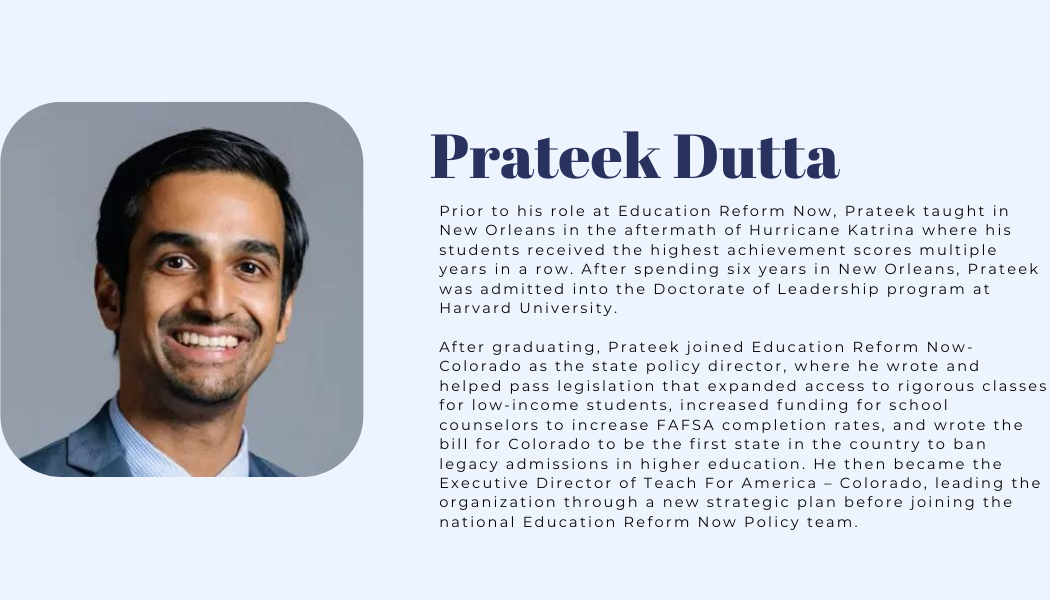
In today’s board meeting, the recently appointed Chicago School Board members are planning on doubling down on the failed policies of the past.
Despite the clear and overwhelming evidence that there is an imminent risk of losing an entire generation of students, the Chicago Board of Education seems to be more interested in prioritizing the interests of adults at the expense of what works for students.
Specifically, the board wants the CEO of Chicago Public Schools to propose a strategic plan that prioritizes neighborhood schools and deemphasizes public schools of choice. Not only is this morally objectionable but also detrimental to students. Studies have consistently shown that districts who embrace school choice improve student achievement, and research has shown that reforms such as the expansion of public charter schools are working in Chicago.
Moreover, taking away choice from parents and forcing students to attend failing schools is actively reinforcing the very same racism the school board claims to be fighting against. School assignments in Chicago and the country are primarily determined by where you live, and where you live is decided by how much wealth you have. In effect, by proposing a plan that focuses on taking away choice from parents and exclusively forcing them to attend neighborhood schools, the board is doubling down on education redlining.
But first, a brief history of how Chicago got here:
”I’m not sure there’s a system as bad as the Chicago system…Forty-six percent of Chicago teachers send their children to private schools. The people who know the product best send their children elsewhere.”
Thirty-six years ago, Secretary of Education William Bennet visited Chicago and called the school system the worst in the country while urging parents to send their children to private schools.
Bennet’s statement came in the wake of two significant events.
First, Chicago high schools released their ACT scores, revealing that half of the schools administering the test ranked in the nation’s bottom 1%. Concurrently, Chicago Public School teachers embarked on a historic 4-week strike, marking the lengthiest teacher strike in Illinois history.
The convergence of these two events prompted parents, community leaders, and the business community to advocate for a comprehensive overhaul of Chicago’s educational system.
A year after the Secretary of Education made his comments, the Illinois State legislature overwhelmingly passed the Chicago School Reform Act of 1988, which sought to decentralize power from the central office to individual schools and hold principals more accountable for school performance.
Believing the reforms were not strong enough and not satisfied with student progress, proponents amended the School Reform Act in 1995 to give the Mayor full control over Chicago Public Schools with the authority for the mayor to select a “Chief Executive Officer” of schools.
Since 1995, Chicago implemented a series of reforms, most notably codified during the Vallas-Duncan years for 1995-2009, that have mostly continued today. This includes data transparency on student achievement, a focus on instructional coherence, new schools without neighborhood assignments, and a streamlined application to attend schools outside of the one a student is zoned in. This has led half of Chicago students to enroll somewhere other than their neighborhood school.
This is what the Board of Education wants to eliminate in their new strategic plan.
Public school choice is extensively embraced by parents in Chicago, with 3 out of 4 high school students and almost half of all elementary school students opting not to attend their designated neighborhood schools. In the past five years, efforts have been made to streamline the process for parents, exemplified by the introduction of a unified high school enrollment system. Notably, the schools with the lowest performance rates have the highest utilization of school choice, as only 4% of parents zoned into failing schools choose to attend them. The system is working, as the preponderance of evidence strongly suggests.
For example, as outlined in a recent RAND study, multi-grade charter schools generate positive outcomes across a variety of metrics, including ACT scores, graduation rates and college-going rates. Additionally, venerable education researcher Sean Reardon of Stanford University found that Chicago students between the third and eighth grade were improving faster than 96% of the school districts in the country, achieving 6 years’ worth of growth over 5 school years.
The proposed resolution the board is voting on today would undo much of this reform. It calls for the CEO to propose a new five-year Strategic Plan for FY 25-29 to the Board that will, in part, “bring together educational and operational goals to…transition away from privatization and admissions/enrollment policies and approaches that further stratification and inequity in CPS and drive student enrollment away from neighborhood schools.”
School choice in Chicago, as a study by the Federal Reserve Bank of Chicago pointed out, does not increase stratification and segregation. Students most likely to utilize public school choice, according to the study, are Black students and students living in the poorest neighborhoods.
Reducing stratification and inequity by doubling down on neighborhood schools is like fighting fire with gasoline; it just exacerbates the problem.
The entire resolution would basically take Chicago back to the pre-reform era of 1995. It uses the anti-racist language of our time while, paradoxically, pushing for policies that would very likely result in resegregation. It does nothing for students and makes zero mention of what students should be able to learn or how to recover from the devastating learning loss from the pandemic.
Our education system is at risk of losing a generation of students, but the current Chicago school board is playing politics and proposing to go back to a day where parents were forced to send their children to failing schools and promised by bureaucrats – who often use school choice themselves – that they just need more time and money to fix them. Parents have no reason to believe that reverting to failed policies would work any better now than it did decades ago when the current reforms were first put into place.